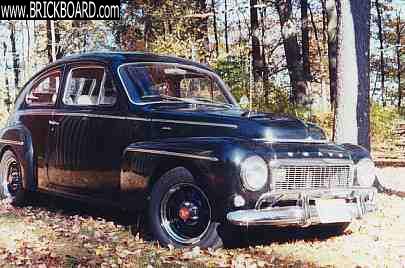|
You've obviously read the same article that I have and the other posters probably know that the article in question very specifically warns about trapping moisture and causing inside-out rust.
Volvo significantly improved their rust treatments sometime around your model year. I've been warned that earlier models tend to rust away badly. My own take would be that the later models have better interior paint and would not be as prone to the rust that you've been warned about. Still be cautious. I would not insulate anything that already gets wet, or may get wet if a rubber seal fails.
I cautiously used spray foam on the upper pillars of my 1967 220. I have some lower body floorpan rust problems in that car, but considering water and gravity, I felt it would be safe to use the good-stuff foam on upper areas as the VW article suggested.
I also used some around my windshield frame-cavity after extensive treatment with POR15. I would not necessarily recommend using it there, but I needed to fill a gap in order to build up some POR Putty.
Although I've no idea if it was original, my 1800E had some foam insulation material back up by the wheel-wells and it had no serious inside-out rust problems. ...plenty of other problem spots - but not there...
If you look at the later model volvo 740s and 940s, you might notice that the interior panels are often backed with dense foam rubber - especially in the cargo area of the wagons. I'd think you might have good success with that "solid" quiet feeling by going that route.
Let us know how you make out.
|

